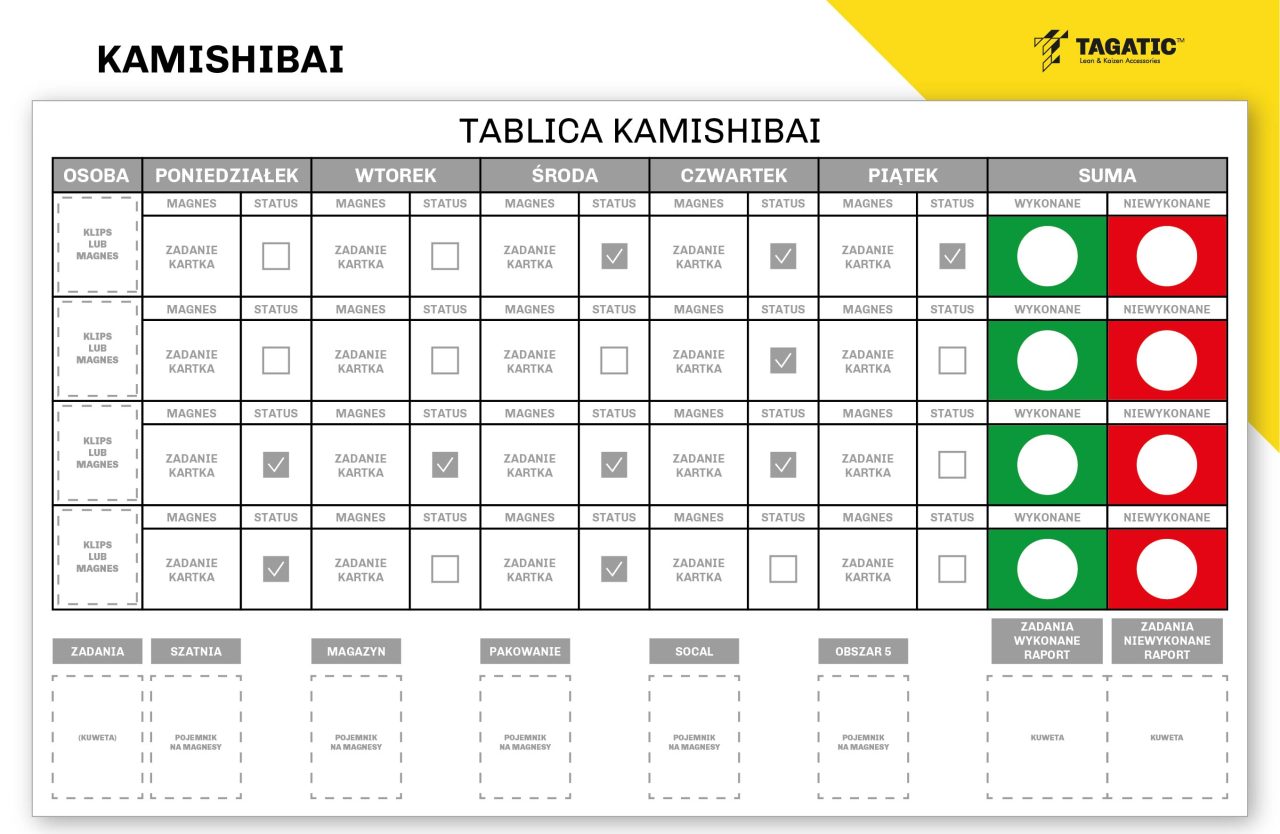5S - how (not) to avoid mistakes?

The key in the implementation of 5S is not to avoid errors. On the contrary - implementing new solutions requires openness to their commitment. Mistakes and failures are inscribed in the way of changes.
What is characterized by the most effective organizations is the way of reaction to failures - based not on the search for guilty, but on an in -depth analysis of the whole process, looking for elements that have failed and correcting them in such a way as to avoid repetition of errors in the future. In Japanese, this is called Hansei.
In Toyota, even after the successful completion of the project, Hansei-Kai takes place-a meeting aimed at analyzing points that did not go according to plan.
As you can see, learning from your mistakes is a must, but it's definitely better to learn from the mistakes of others. Below we describe some errors that we have seen. We even committed some ourselves. We share them to protect you from discovering them again.
Treatment of 5S as a project
In many organizations at the beginning of the implementation of 5S in subsequent positions you can see ambitious plans, curiosity and willingness to change. The first changes are visible, people involved, but after some time after the results that everyone was so proud, there is not even a trace.
To the question of what went wrong - the most common answer is misunderstanding the idea of the fifth s - self -discipline and treating 5s as a thing to do, and not as a way to change mentality. 5S is not something that can be "done", just like changing organizational culture is not something that takes place within a month. 5S is not a project that has its beginning and end.
To achieve a change in employees' approach, you need many months, and sometimes even years of hard work. When 5S "dies" it is most often caused by a lack of self -discipline.
Audit = self -discipline
But how is it - no self -discipline? After all, we have an implemented audit system!
You should ask yourself whether periodic audits are the best solution? Since we are talking about a continuous process of change, can it happen if we supervise it once a week or once a month?
Self -discipline cannot be based only on the audit system - this is the continuous work of the whole team. This introduction to employees' awareness of the need to respond immediately to observed incompatibilities. Instead of a cyclical auditing system, which from experience leads to perversions and in a long perspective to unnecessary costs, and small results, a better tool for use is the Kamishibai board.
Let's look at managers and their impact on changing culture in the spirit of 5S in accordance with the popular statement "Fish breaks from the head".
Breaking the eye on minor deviations from the norm.
How often do we react through the hall/offices to deviates from the adopted standard? Unfortunately, very often in the sheer volume of current tasks, chasing one meeting to another, we stop paying attention to the environment. However, this lack of response can be perceived as silent permission to not follow the adopted rules and standards.
In this case, we can observe the same mechanisms that the professor of Stanford University Philip Zimbardo analyzed in his experiment. The experiment consisted of observing what an impact on the level of vandalism has a reaction or lack of it on minor destruction. The conclusions of this experience show that the lack of response to minor damage is a testimony to the lack of care and compliance with the rules, which in turn leads to greater damage and escalation of problems.
If we do not respond to non -compliance with standards even in trivial matters, this will be a testimony that we accept their breaking. The result is less and less respect for the rules and standards, and yet it is crucial in the 5S method. Importantly - this applies not only to 5S itself. The same applies to all other rules that you want to maintain as an organization: from health and safety rules, through work standardization, to the implementation of the company's vision and mission.
There is no example coming from above.
Albert Einstein used to say: "If the buzzed desk is a sign of a bogged mind, what is the sign of an empty desk?" This is a often raised argument by the management when they pay attention to it. However, looking at the situation from the perspective of an employee, from which it is required to change the habits, from which it is required to maintain strict maintenance of order, it looks completely different.
On the one hand, the management tells him how important order is, but it demonstrates something completely different. Such a discrepancy between what we say and how we behave results in a lack of trust and faith in the honesty of words. The organization's culture cannot be changed if we don't trust our team.
And how is the situation with the wrong/insufficient involvement of employees in changing the organization from a 5S perspective?
No employee involvement
When we decide to start changes under 5S, we engage a large team. Not only people who work in a given position on a daily basis, but also their superiors and support departments, led by someone who knows the 5S method.
With such a large team, unfortunately, the voice of a person from a given position is often omitted or he is unable to break through the opinion of his superiors. However, it is this employee who will spend most of the day at work. The changes that will be introduced will assess for most of the day spent in the company.
Therefore, you should listen to his attention and criticism of the proposed solutions. Let us remember that 5S is not a one -time action to build a perfect workplace, but the path to constant improvement - it is more important to convince employees to the method itself than to introduce as many changes as possible.
Failure to submit responsibility
A common mistake made at the first 5S approaches is to provide responsibility for changes to people who are specialists from 5S, but are not the owners of the area. They are expected to change the work culture. Unless they are people who directly manage the area and employees, they do not affect the determination of the priority of activities. They are often placed in situations when 5S goes down to the further track - "because urgent shipping", "because there are no people", etc.
To achieve success for changing a given area, its owner should be responsible - a 5s specialist should be support for him. Only when the owner believes in change and is involved in it there are there any chances of success.

